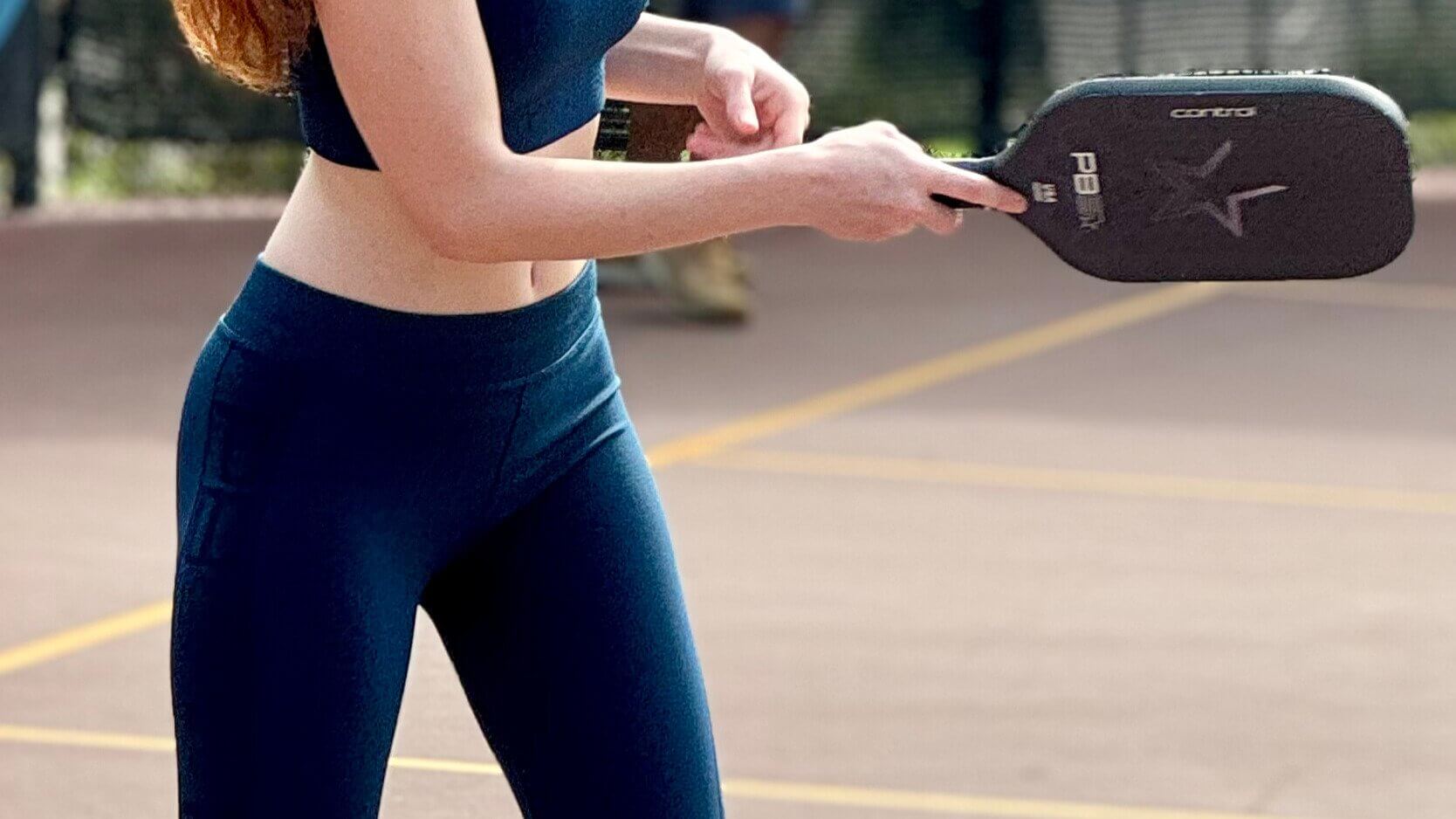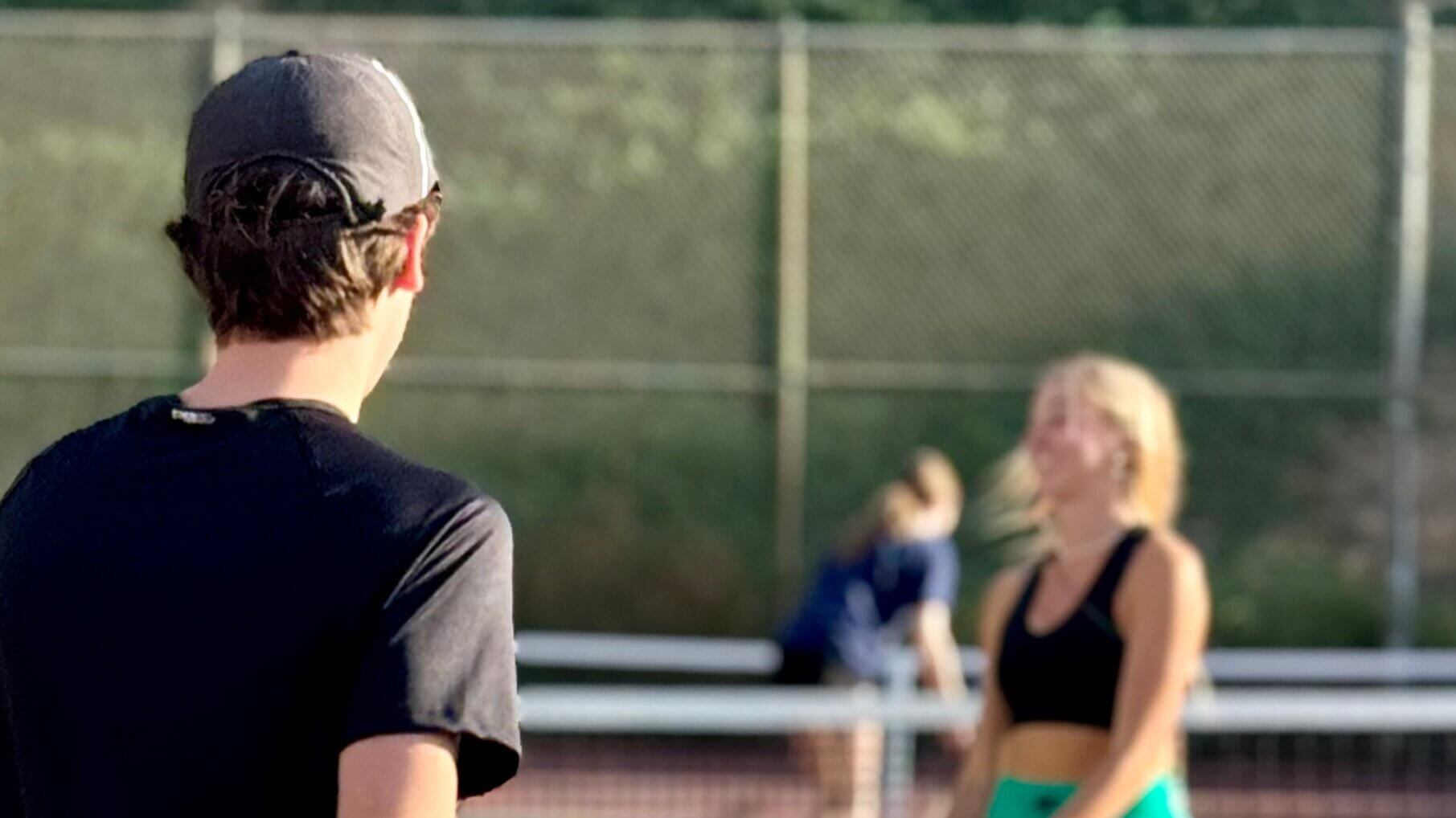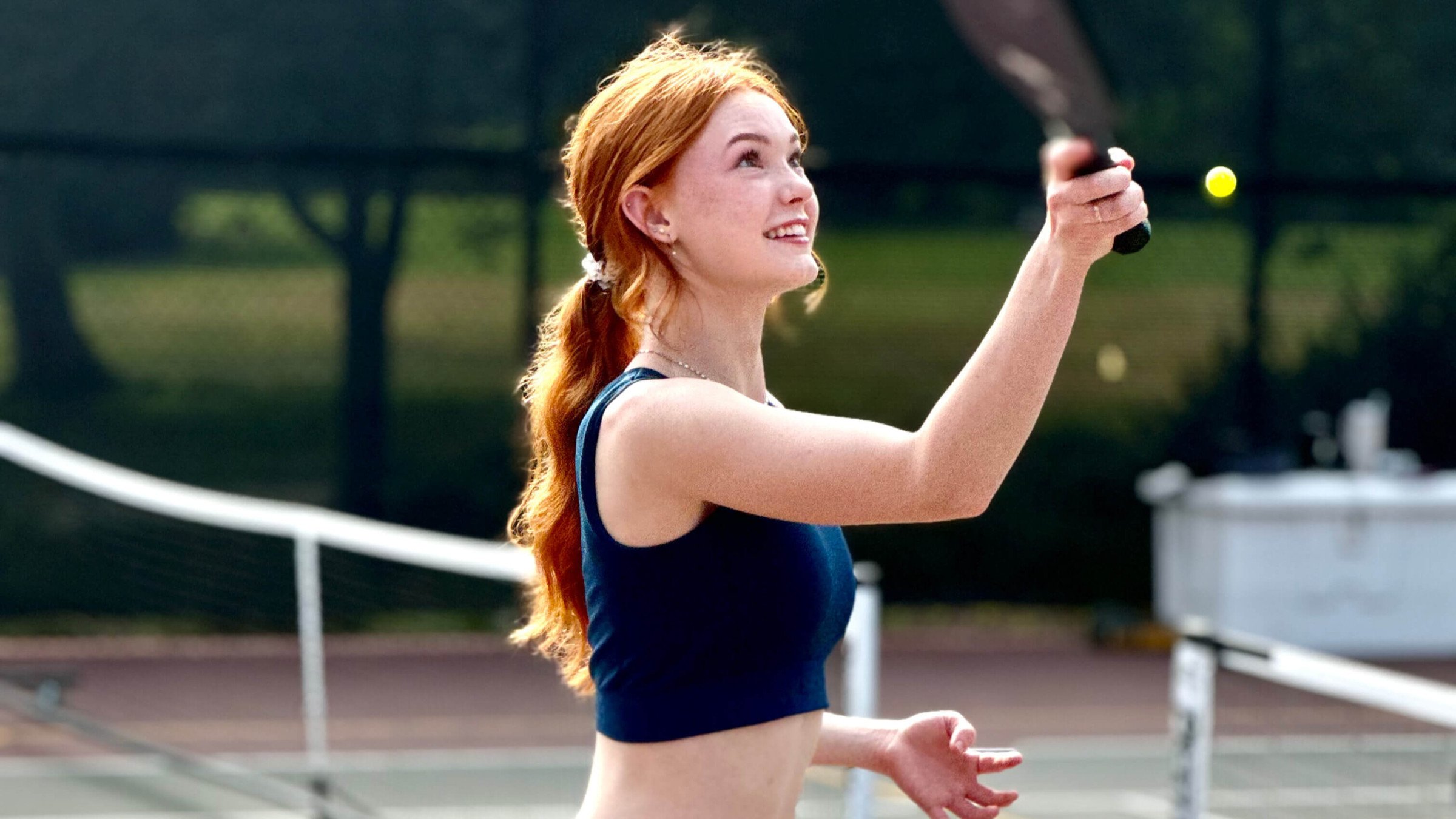Key takeaways:
The basic rule is simple: if the ball touches any part of the line, even slightly, it's considered "IN." This applies to all lines on the court, including baselines, sidelines, and the kitchen line.
Players call their own side of the court in standard play, meaning you're only responsible for calling lines on your side. Don't make calls on your opponent's side unless specifically asked.
Tournament officiating varies across different levels of play—while recreational games rely on the honor system, tournaments may employ referees, line judges, and even electronic line-calling technology to ensure accuracy.
In pickleball, making the right call can mean the difference between winning and losing a point, game, or match. The basic rule seems simple enough—if the ball touches any part of the line, it's "IN"—but things can get confusing in the heat of competitive play.
This guide will walk you through everything you need to know about pickleball line calls, from basic court boundaries to tournament officiating. Once you understand these guidelines, you'll make calls more confidently and maintain good sportsmanship during your pickleball sessions. Check out PB5star's selection of quality apparel to take your game to the next level.
Pickleball court boundaries
The pickleball court layout features several important lines defining different play areas. You need to understand these boundaries to make accurate line calls.
A standard pickleball court measures 20 feet wide by 44 feet long, with lines marking the outer boundaries, the non-volley zone (commonly called "the kitchen"), and the service courts. Each line serves a specific purpose in gameplay.
The most fundamental rule in pickleball regarding boundaries is straightforward: if the ball touches any part of the line, it is considered "IN." This rule applies to all lines on the court, including the baseline, sidelines, kitchen line, and service court lines.
This rule creates an advantage for the offensive player, as even the slightest contact with a boundary line means the ball is still in play. The lines' width (typically 2 inches) becomes part of the playable court area.
For visual confirmation, focus on the point of impact where the ball meets the court surface. If there's any overlap between the ball and the line at this moment, the ball is in. If the ball lands completely outside the line with no contact, it's out.
Pickleball's line call honor system
USA Pickleball, the sport's national governing body, provides clear guidelines for making line calls in recreational and competitive play.
So, is the line in or out in pickleball? Well, players are responsible for calling lines on their side of the court when playing without officials. The honor system is a cornerstone of pickleball culture, and players are expected to make fair and honest calls. The official rule states that players should call "out" only when they can clearly see space between the ball and the line upon impact.
The "benefit of doubt" principle applies when uncertainty exists. If you're unsure whether a ball landed in or out, the proper call is "in." This principle promotes fair play and reduces disputes during recreational games.
For doubles play, either partner can make a line call, but the partner closest to the line typically has the best perspective. If partners disagree on a call, the proper resolution is to declare the ball "in," as this gives the opposing team the benefit of the doubt.
Overrules should be rare occurrences. You should not call shots on your opponent's side of the court unless asked for assistance. This maintains respect for each team's responsibility to manage your side of the net.
Tournament line calling procedures
When competitive pickleball intensifies, precise line calls become part of the winning strategy. Sanctioned tournaments showcase the sport at its highest level, where every shot counts, and proper gear helps players maintain perfect positioning for those close calls near the lines.
Most sanctioned tournaments have referees keeping an eye on things. They get the final say on whether that shot was in or out. But here's the interesting part - players still help call shots on their side even with refs watching. However, they can overrule you if they have a clear view and certainty about the ball's landing spot.
The bigger tournaments kick things up a notch. They'll position line judges around the court to watch specific lines. These folks aren't distracted by the rest of the game - their only job is to track where balls land on their assigned boundary.
The pro circuit started using electronic systems, just like in tennis. These setups use super-fast cameras that track exactly where the ball touches down. There will be no more debates—the technology settles it instantly.
You can appeal to the ref if you have a problem with a call during tournament play. But once they make their decision, that's pretty much it. The real pros know that keeping cool when calls don't go your way is just as important as making good shots.
For those nail-biter moments in big matches, some tournaments now allow players a limited number of challenges. When used, they'll check video replay to see if the original call was right. This tech keeps improving as pickleball continues its march into the big leagues.
FAQs: Common questions about pickleball line calls
Here are the answers to players' most common questions about whether the ball is in or out in pickleball.
Is a ball in if it touches any part of the line?
If the ball grazes any part of the line, it's good - that's a point for your team. Think of the lines as part of your runway - if you're touching it, you're in.
What if my partner and I disagree about whether a ball was in or out?
If you and your partner disagree on a line call, the correct ruling is to call the ball "in." This gives the benefit of doubt to your opponents.
Can I call a ball out on my opponent's side of the court?
Generally, no. Each team is responsible for making line calls on their side of the court. Calling lines on your opponent's side is considered poor etiquette unless they ask your opinion.
How do line rules work in the kitchen (non-volley zone)?
The kitchen line follows the same rules as your favorite outfit - everything needs to work together. A ball touching the kitchen line counts as in that zone, but remember to master the 75 Rule for optimal court positioning.
Enhance your game through proper line calls
Making accurate line calls isn't just about following rules but respecting the game and your fellow players. As pickleball continues to grow, maintaining its reputation for fairness and sportsmanship falls on each player's shoulders. Practice observing ball landings during casual play to sharpen your visual accuracy. Position yourself properly to get the best angle on line calls, and communicate clearly with your partner during doubles. When you make an occasional mistake—we all do—correct it immediately and move on.
Remember the fundamentals: a ball touching any part of the line is in, call only your side of the court, and when in doubt, give your opponent the benefit by calling the ball in. These principles keep games friendly and fair at every level of play. The more comfortable you become with making proper line calls, the more you can focus on enjoying the game! PB5star offers a range of quality gear that can help you stay comfortable and focused during those extended rallies where every line call matters.






